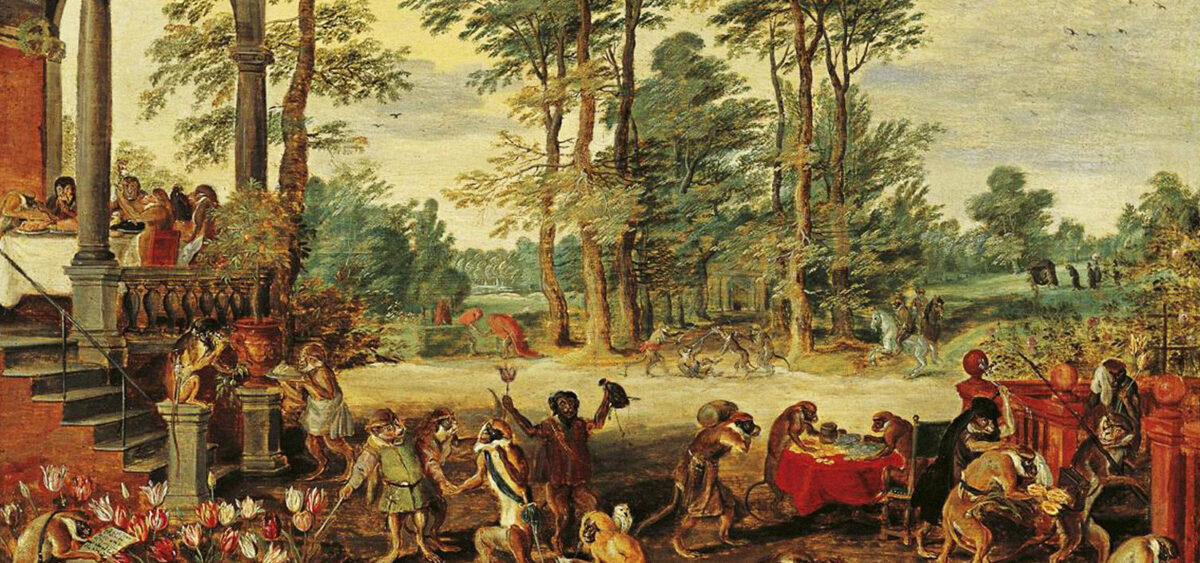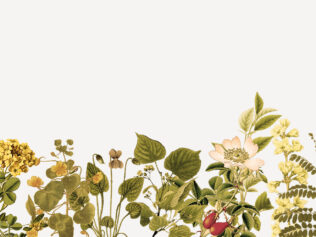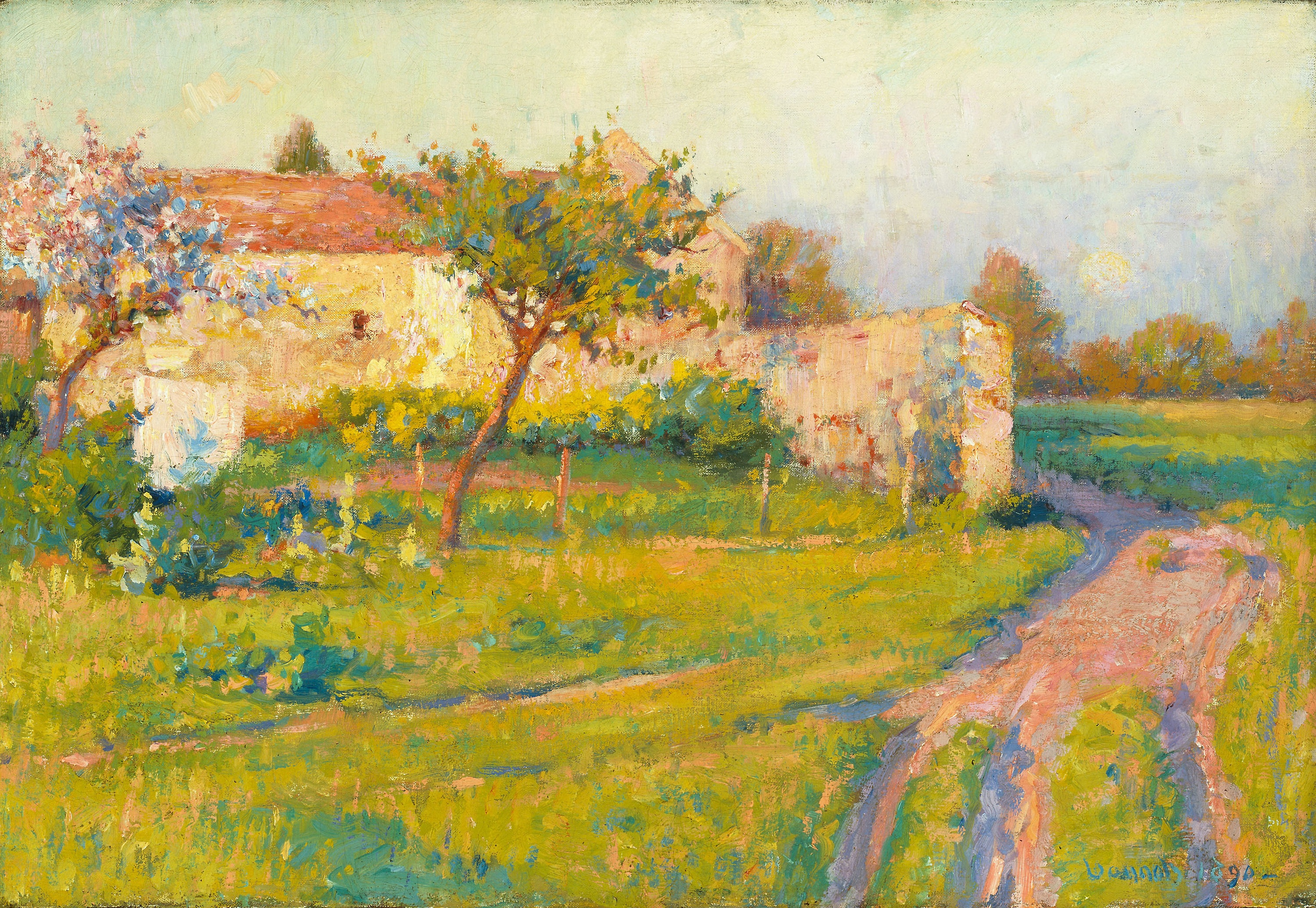
The tulip fever that swept the Netherlands in the 17th century is a textbook example of a speculative bubble. Merchants did invest colossal money in flower bulbs, but was the madness really as widespread as some sources would have us believe?
“The Pope no longer thanks us for the flowers,” reported the Dutch media despondently in 2019. The headline was somewhat exaggerated because, in fact, Francis had nothing to thank the Dutch for. The journalists could have more accurately written: “We, the Dutch, no longer send the Pope flowers.” This was a tradition dating back to 1985, when during the beatification ceremony of the Dutch priest Titus Brandsma in Rome, his compatriots prepared a special floral composition. The gesture was repeated every year at Easter – usually arranged with yellow and white flowers. Over the years, the custom developed to such an extent that it took as many as 25 florists to oversee the final shape of the Easter composition over a course of two days, year after year.
In 1985, John Paul II found the flowers particularly to his liking, and a year later, as part of the Easter Urbi et Orbi, he greeted the faithful in Dutch, saying: “Thanks for the flowers!” The phrase Bedankt voor de bloemen! permanently entered Dutch colloquial speech. The tradition of giving thanks was upheld also by Benedict XVI, until it fell to Pope Francis to set a precedent by uttering the ominous Grazie per i fiori!, thus breaking with the long tradition of giving thanks in the language of Rubens and Rembrandt.
Officially, the Dutch were not offended – although the entire affair was extensively covered by the media there. The tradition of delivering Dutch flowers to the Vatican was finally stopped in 2019, after more than 30 years. Apparently for austerity reasons, but who can be sure?
It does not change the fact that the Netherlands is all about flowers. We are familiar with Vincent van Gogh’s sunflowers and the floral paintings by Jan Pieter Brueghel. Fewer realize, though, that flowers were a little-known passion of Piet Mondrian. The painter – whom history knows rather as a precursor of abstractionism, neoplasticism, and an advocate of art as far removed from reality as possible – was also the author of 150 realistic paintings depicting flowers. Here a gladiolus, there an amaryllis, but Mondrian also happened on a sunflower! Apparently, abstract art satisfied him conceptually, but not emotionally. Hence the flowers. Perhaps they served as an escape from his abstractionist painting? They are personal and intimate in nature, rather like portraits, the art historian Martyna Kliks surmises.
“The Sun creates flowers, warmth, lilacs. The sea creates silence. What do we create?” philosophically asks the Dutch haematologist and poet, Leo Vroman. The original version mentions heather rather than lilacs, but otherwise the poem would not read as rhythmically in the Polish translation – and both these flower types tend to have a similar colour. All right, all right: I know they differ. The author of the essay you are currently reading might be but a bumbling amateur in the field of flowers, but as a Dutch Studies scholar he knows a fair bit about tulips. You do not have to be a flower expert to see and appreciate the contexts in which tulips keep reappearing throughout Dutch history.
Floral fever
For the Netherlands of today, the tulip is a guest from rather distant lands. It stems most probably from Africa – and if from Europe, then from its southern part. In nature it appears in Iran, Turkey and Asia. Tulip crossbreeds were created as early as the 10th century in Persia, and the historic Ottoman Empire is sometimes referred to as the Tulip Era.
So when did tulips reach areas closer to what in the future would become the Netherlands? Probably no earlier than in the mid-16th century: first the Flemish ambassador of Ferdinand I of Habsburg, bearing the mellifluous name Ogier Ghiselin de Busbecq, transported some bulbs from Constantinople to Vienna, and subsequently they found their way to France. Already in 1562, deliveries of tulips from Constantinople were reaching Antwerp on French ships. Here, the flowers found conditions as if created especially for them: a lot of rain, a short and mild winter, as well as cool, long autumns and springs. Further tulip expansion came with the Dutch War of Independence and the division of the region into the poorer, Catholic Southern Netherlands (dependent on Spain), and the enlightened north, known as the United Provinces. That is where theologians, merchants and artists emigrated to – but also gardeners, bringing tulip seedlings with them. Their popularity gradually increased until the 1630s, by which time the country was in the full grip of what economy textbooks refer to as ‘tulip mania’.
This was an important event in Dutch history. The importance of the topic is evidenced by the fact that a large portion of international publications on Dutch tulips appears not only in natural sciences or art history periodicals, but also in history and economy volumes. Between November 1636 (traditional planting season) and the first weeks of February 1637 (traditional flowering season) the phenomenon called a speculative bubble occurred in the Dutch city of Haarlem. Nowadays, ‘tulip mania’ is likened to the 1929 Wall Street crash or the rising price of bitcoin. The problem is that for years we have not been able to determine what its scale was really like, or what exactly caused it.
A crash without the stock exchange
First and foremost, it was all about the bulbs. Although throughout the early decades tulips in the Netherlands were purchased in the form of blooming flowers, the ‘mania’ did not encompass mature plants or seeds. The prices of those remained unchanged, while the prices of bulbs soared tremendously.
Tulip bulbs dug out after flowering sprout small daughter-bulbs, from which new plants grow quite quickly. The seeds, in turn, need up to seven years to mature. This is a lot, especially at a time when most people did not survive long past 40. When it comes to seeds, it is hard to determine what variation of tulip they will yield. Several hundred years ago, only bulbs of specific plant types could therefore be considered – in today’s terms – a stable investment commodity promising a return on capital.
Second, it was about fashion – a fashion that went beyond trade in plants carried out by specialized breeders. By the end of the 17th century, tulips had gained interest among wealthy doctors, pharmacists, merchants, craftsmen and representatives of other elite groups, which proves that the bulbs were seen as way to deposit one’s savings. It is said that one poor fellow, a sailor who confused a tulip bulb with the common onion and ate it with his herring, had to atone for this misdeed in police custody. The most valuable specimens were the variegated varieties, initially considered ‘diseased’.
Third – what sparked the tulip craze was a change in the law in 1635, when the sale of bulbs per unit was replaced by sale by weight. Heavier, developed bulbs ensured faster growth, so the prices became more reflective of future profit. There were quite a few metal coins circulating in the Netherlands at the time, which revived trade, but tulip bills of exchange were also introduced, which in turn meant a shift from trade in live, organic commodities to one in securities.
However, the stock exchange had no supervision over tulip shares. In 2017, Ball State University researchers James E. McClure and David Chandler Thomas showed on the pages of Financial History Review that the inhabitants of 17th-century Holland became gamblers entangled in a speculative bubble on a market that was not regulated by anyone. Flower investors met in special taverns. They did not have an intermediary institution that would collect a deposit to secure a person’s solvency, although at some point so-called ‘wine money’ started being added to the price at which shares were bought – a fee reducing the seller’s risk in the event of crop failure, which would increase the actual, final price per bulb.
Let me make this clear: these transactions did not consist in selling actual bulbs for actual cash. Often the buyer did not declare money because he did not have any, so he would instead offer a future settlement in the form of tools, cloth or farm animals. The seller, in turn, did not physically possess any bulbs, only bills of exchange confirming their existence. In today’s stock exchange parlance, we would refer to this phenomenon as a futures contract. The bulbs were already in the ground, and Dutch investors trusted that they were simply buying a certain number. This number could be hypothetically multiplied by the presupposed number of daughter-bulbs to estimate the assets to be dug out in spring. How much might that be, exactly? That would only become clear many months later.
A house for a bulb?
Researchers on tulip mania argue as to the scale of the madness. According to some sources, some people would stake entire tenement houses for one bulb. According to others, this is a myth, although in fact the price of some species per bulb could match the value of a single 17th-century apartment. It is not known, however, whether anyone actually signed over such an apartment in such a settlement.
The crash came between 4th and 11th February 1637. It spread from city to city, depending on the region of the Netherlands, since at the time news did not travel with particular haste – it had to be carried by messengers. In February, after the first germination, it was possible to estimate how many tulips would grow to bloom. It is probable that the estimated number was so large that it became clear: stock prices had been overinflated. That is at least what McClure and Thomas claim, having analysed both bill of exchange rates and temperature charts for that year.
The historian Mike Dash has established that some bulbs, worth thousands of guilders at the time, were devalued tenfold, and others became worthless. Even though tulip mania has inspired novels and films, the researcher Anne Goldgar in her book Tulipmania: Money, Honour, and Knowledge in the Dutch Golden Age argues that the crash was not as immense as we had believed for hundreds of years. The legend was continuously embellished by Dutch Calvinists, who saw this story as an opportunity to criticize unworthy consumerism drawing people away from God. Another researcher, Peter M. Garber, notes that the propaganda surrounding the tulip trade might have been generated by the financial elites of the time, who wanted to redirect a stream of dodgy tulip money back to the traditional stock exchange remaining under their control.
Rumours of spectacular bankruptcies and losses of real estate at the time, even though repeated for years, are not reflected in source materials. Goldgar – having analysed hundreds of transactions – has found that only 37 people spent more than 300 guilders on bulbs, which is the equivalent of a craftsman’s annual income. In addition, they traded largely with people they knew, for instance with family. Almost everyone who traded belonged to the upper echelons of society, so an expense of this proportion did not involve sacrifice. In turn, the most expensive tulip bulb the records mention, Semper Augustus, did cost as much as a house with a garden. However, according to Goldgar, the biggest loss was the violation of public trust. “Relationships [were] based on trust, and people said, ‘I don’t care that I said I’m going to buy this thing, I don’t want it anymore and I’m not going to pay for it’. There was really no mechanism to make people play because the courts were unwilling to get involved,” the researcher says in a piece published in Smithsonian Magazine.
The bulb market froze within a few days. Authorities came to the rescue. Negotiations between tulip growers and tulip brokers lasted approximately a year. Transactions made between November and February were annulled provided that the growers received at least a few percent compensation calculated against the inflated bulb prices. The business resumed operation in May, when the flowers were collected, the bulbs dug out, and it was finally possible to count how many new bulbs had appeared.
Audrey Hepburn and the great hunger
Were the 17th-century Dutch crazy? For anyone who would like to be so harsh to them, I recommend recalling how many of their Polish acquaintances purchased apartments prior to completion at the cusp of the 21st century, taking a mortgage for several dozen years, what’s more – in a currency in which they did not earn wages, and whose rate has changed completely over the years. Just as current bitcoin millionaires can look back with a laugh at the people who were tapping their forehead when the former decided to invest in an uncertain, almost non-existent internet currency. Human beings are only human, despite the passage of hundreds of years.
As Michał Komar rightly noted years ago in the pages of Tygodnik Powszechny, we are outraged by the price of a tulip bulb equivalent to 10 times the annual income of a craftsman of the time, but the fact that an Ambrosius Bosschaert painting depicting tulips, irises and dahlias fetches a similar price is not that astonishing. And just as a flower bulb has no intrinsic value, a painting could be considered worth the cost of the paint and canvass. Value is bestowed through the painter’s ability, time spent working and artistic values, but also blips in fashion and speculation. In turn, what determined the price of Semper Augustus was the fact that breeding those rare bulbs up to a dozen or so took an experienced gardener many years of work, and at a particular moment in history there were investors who wanted very much to come into their possession. Plus, of course, blips in fashion and speculation.
The tulip bulb returned as a symbol onto the pages of Dutch history 300 years later, during World War II. The turn of 1944 and 1945 is known in the history of the country as the ‘hunger winter’. At the end of the war, food transport to the north of the country, including to Amsterdam and Rotterdam, was so problematic that sometimes the caloric allocation per capita was less than 400 kcal. Eating tulip bulbs became a way to survive. Although recipes for tulip bulb, potato and assorted veg soup existed before World War II, their authors did point out that its flavour was not particularly pleasant. In 1944 it did not matter – by the end of the German occupation, the inhabitants of the Netherlands cooked or ground tulip bulbs to later consume them as the only sustenance available.
For years, the best-known testimony of having eaten bulbs during the war was the statement made by Audrey Hepburn, who throughout the war spent five years with her Dutch mother in Arnhem, where she attended the conservatory. Later she would share with the Chicago Tribune: “Tulip bulbs – sounds disgusting. But you don’t eat the bulbs themselves. They are used to make flour, which is practically a luxury product, and you can bake cakes and cookies with it.”
Today, flowers in the Netherlands are primarily a business – their sales outside the country grow by tens of millions of euros every year. In 2018, the value of fresh flowers exported to Germany alone was over €1 billion. Poles bought from them an amount of flowers valued at over €150 million. The cut flowers export for the Netherlands amounted to around €3.7 billion. For context, this is equal to the value of wood exported by Poland. And Poland is a country twice as large.
But the Netherlands is a country that sells flowers rather than breeds them. The vast majority of flowers are grown in Africa and South America. It is from there, through the Dutch stock market, that they reaches florists every day throughout Europe. However, while a part of the flower business, especially in the wholesale department, is doing great, a part is in crisis. The decision not to send flowers to the Pope anymore was not the only end of an era in the history of Dutch floristics: in Amsterdam, the last real Bloemenmarkt florist has closed down his shop in the city centre.
Bunches of flowers disappearing from Amsterdam
Bloemenmarkt is a flower market in the centre of Amsterdam, along the Singel canal, between the Muntplein and Koningsplein squares, one of the more characteristic parts of the city. Shops and stalls were placed on boats moored in the canals, which made it the only flower market on the water in the world. Opened at the end of the 19th century, when it had been relocated from its original place a few canals away, for years it was not only a showcase of Amsterdam, but also an arena of historical events.
It was here, in 1933, that a street was widened to accommodate both cars and new florists. It was also here, a year later, that a florist by the name of Van West protested in a letter to the newspaper against increasing the number of stalls and allowing trade more than three days a week. He claimed that this threatened his existing flower shop, that the traffic was very small, and that there was no room there for six florists. Room was quickly found, and over the years thousands of people visited the market. It was here, in 1969, during pro-democracy demonstrations, that local students were arrested for throwing flower pots and sacks with soil at the police. In 1978, despite strong protests from car drivers, the city council made the entire street a pedestrian zone, thus eliminating huge traffic jams in the area. It was here, in November 1989, that Dutch florists spontaneously gave flower bunches to Lech Wałęsa, who was passing through Amsterdam on the occasion. It was here that Christmas trees appearing in the stalls heralded Christmas for decades. “There are Christmas trees on Bloemenmarkt, Christmas is coming!” the newspapers would report.
Above all, however, it was here that you could buy flowers at one of over a dozen stands and stalls. Although the first souvenir shops were opened in Bloemenmarkt in 1993, 14 stalls still functioned as traditional florists. One of them was a florist shop opened by Mr and Mrs Timmer back in 1943: ‘Timmer – Flowers and Plants’. Mrs Timmer, who was known as the ‘flower queen’, would review the quality of Christmas trees for a given year. At one time, somewhere in the 1970s, a teenager by the name of Michael Saarloos got a job at her stand. Little did she know that Michael would stay on with the company for years and marry her daughter, and in time inherit the entire business, work at Bloemenmarkt for 45 years, and be the one to close down the shop as the last floating florist of Amsterdam.
“There was a time when the people of Amsterdam bought seedlings and cut flowers from me on Saturday mornings. Those times will not come back. The last place at the market where you could buy fresh flowers has disappeared,” Saarloos said in an interview given on his last day of work in April 2019. His 20-something son, Julien, who used to help his father with running the business, declared that he was not going to give up on the industry, but he would look for a different place to run a flower shop. “I don’t want to sell tulip bulbs and gadgets,” he asserted.
On thousands of tourist websites, including the official websites of the Netherlands, the fresh flower market is mentioned as a tourist attraction, and the articles still contain pictures of multi-coloured bouquets. And although there are no longer any fresh flowers at this world-famous market, the tulips remain – only made out of wood or plastic, but at least in many colour varieties. Seedlings, yes – but mostly cannabis. The plants that were once delivered here by boat every morning and handed straight from the water are gone. Flowers that throughout the years made the strolls of inhabitants more pleasant and constituted a last-minute saving grace for the forgetful going on a date along the canals or to a birthday party in the city centre. They have given way to garish magnets, postcards and wooden clogs.
The bulb scam
According to Saarloos the florist, tourists have become the curse of Bloemenmarkt. The crowds encourage the inhabitants of central Amsterdam to increasingly avoid places along the canal, and local authorities do not control whether the shopkeepers comply with the rule that gadgets can constitute only 25% of your range. Visitors from abroad, in turn, have no need for freshly-cut flowers; at most they are looking for commemorative sachets with tulip bulbs, so that they can grow them and please the eyes in their hometown.
But they do no such thing – as they fail to grow. In the autumn of 2019, an official commissioned by the city of Amsterdam and the Dutch equivalent of the Office for Competition and Consumer Protection bought 1364 tulip bulbs in various stalls at the market, and subsequently planted them. The first conclusion: none of the specimens bore the colour as described on the packet. The second, shocking conclusion: despite ensuring optimal conditions, only 14 bulbs pierced the ground, which constitutes approximately 1%. This is because – as we might recall from a several-centuries-old story – tulips should spend autumn and winter in the ground. If they spend that time in a plastic bag on a shop display, they will never grow again. Similar irregularities were found in the Keukenhof park in Lisse, between Amsterdam and The Hague, which is the world’s largest flower park (open from March to May), where, apparently, seven million tulips are planted per year. In both places, the inspection also found sales of blue tulip bulbs. The only snag is that blue tulips do not exist.
The Dutch, as they tend to, have announced for some time wide-spread public consultations on whether the market is fulfilling its function and what its future should be. What do the tulips themselves say? As the Dutch poet Bertus Aafjes wrote: “If flowers could speak, they would be silent anyway.”










